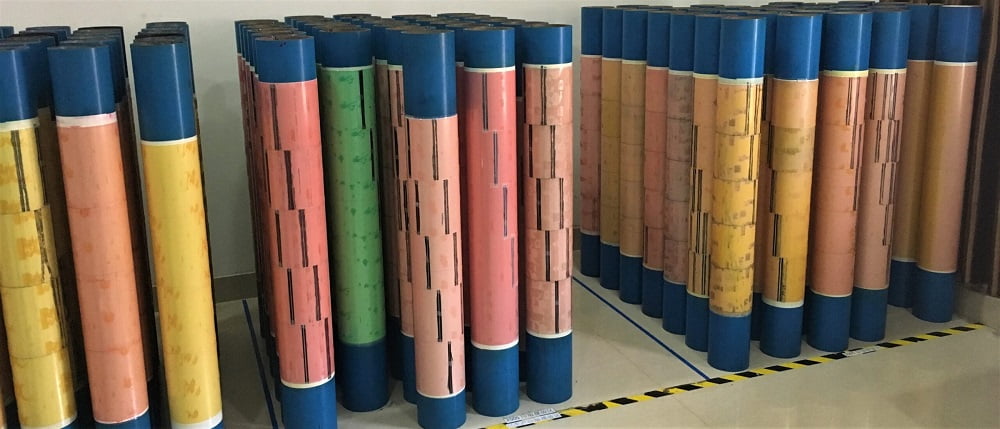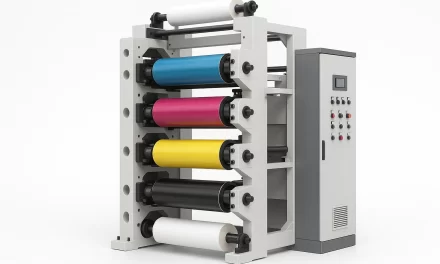Tension monitoring devices play an essential role in flexographic printing, where substrate tension control is crucial for producing high-quality, consistent prints. These devices help printers maintain optimal tension on various materials, from flexible films to paper, ensuring smooth and precise prints even at high speeds. This article explores the types, functions, and benefits of tension monitoring devices in flexographic printing and explains why they are integral to modern printing setups.
Introduction to Tension Monitoring in Flexography
In flexographic printing, maintaining proper tension on substrates is fundamental to print quality. Whether working with flexible films, papers, or other materials, keeping the right tension minimizes issues like web breakage, wrinkling, and misalignment. Tension monitoring devices help printers by continuously measuring and adjusting the tension, enabling consistent production, improved print quality, and reduced material waste.
The Importance of Tension Monitoring in Flexographic Printing
Unstable tension can cause various printing issues, including misregistration, blurred images, and substrate tearing. By accurately monitoring and controlling tension, flexographic printers can prevent these problems, leading to better print quality and higher production efficiency. This precision is especially vital in high-speed printing, where even minor fluctuations can impact alignment and color accuracy.
How Tension Monitoring Devices Work
Tension monitoring devices measure the force exerted on the substrate as it moves through the printing press. These devices use sensors, rollers, or load cells to detect tension levels in real-time. Based on the readings, the system makes adjustments, either manually or automatically, to maintain consistent tension throughout the print run.
For instance, when tension increases or decreases beyond the desired range, the device signals the press to adjust the unwinding or rewinding speed accordingly. This continuous feedback loop helps maintain stability across various production phases.
Types of Tension Monitoring Devices in Flexography
Load Cell-Based Tension Monitoring
Load cells are highly accurate and commonly used for tension measurement in flexography. They measure the force applied on the substrate as it passes over them, converting mechanical tension into electrical signals. These signals are processed by the control system, allowing for automatic adjustments.
Dancer Roll Tension Monitoring
Dancer rolls control and monitor tension by adjusting their position based on the tension in the substrate. When the substrate’s tension changes, the dancer roll either rises or falls, compensating for the difference and maintaining steady tension across the web.
Ultrasonic Tension Sensors
Ultrasonic sensors measure tension using ultrasonic waves. These sensors are non-contact and ideal for sensitive substrates where direct contact could damage or alter the material. Ultrasonic sensors provide reliable, real-time measurements, making them suitable for high-speed printing.
Magnetic Tension Sensors
Magnetic sensors use magnetic fields to measure tension without direct contact with the substrate. These sensors are suitable for delicate materials or where load cells or dancer rolls might be impractical due to substrate sensitivity.
Components of Tension Monitoring Devices
Sensors
Sensors are the core of tension monitoring devices, measuring the tension in real-time. Load cells, ultrasonic sensors, and magnetic sensors are popular options in flexography due to their accuracy and responsiveness.
Control System
The control system processes data from sensors and adjusts machine components to regulate tension. Advanced control systems use algorithms to maintain stable tension across changing conditions, ensuring continuous quality throughout the print run.
Actuators
Actuators adjust machine components like rollers or brakes in response to sensor feedback. They play a crucial role in correcting any variations in tension, especially during high-speed production runs.
Data Display Interface
Many modern tension monitoring systems include a data display interface, allowing operators to view tension levels and make adjustments if necessary. Some interfaces also provide historical data, helping operators optimize tension settings over time.
Advantages of Tension Monitoring Devices
Enhanced Print Quality
Maintaining consistent tension results in better image alignment, color registration, and overall print quality, essential for high-definition flexographic printing.
Reduced Waste and Downtime
Accurate tension control reduces substrate waste by minimizing issues like tearing and misalignment. Less waste means reduced production costs and fewer interruptions.
Increased Production Efficiency
Tension monitoring devices enable printers to maintain optimal tension at high speeds, ensuring continuous, efficient production without compromising quality.
Improved Consistency Across Print Runs
Tension monitoring devices provide the repeatability needed to achieve consistent quality across multiple print runs. This consistency is particularly valuable for brand packaging, where uniformity is crucial.
Applications of Tension Monitoring Devices in Flexography
Flexible Packaging
Flexible packaging substrates like plastic films can stretch easily, making precise tension monitoring essential to prevent wrinkling, tearing, and registration errors.
Label Printing
High-speed label printing requires exact tension control to ensure that labels are printed without misalignment, crucial for designs with multiple colors and fine details.
Corrugated Boxes
Corrugated materials have unique tension requirements due to their thickness and rigidity. Tension monitoring devices help maintain the right tension to avoid substrate damage.
Shrink Sleeves and Wraps
Shrink sleeve printing requires tight control over the substrate as it is stretched and shrunk. Tension monitoring ensures accurate color registration and minimizes distortions.
Challenges in Implementing Tension Monitoring Devices
While tension monitoring devices offer numerous benefits, they also come with certain challenges:
- Initial Cost: Advanced tension monitoring systems can be costly, especially when integrating high-precision load cells or ultrasonic sensors.
- Regular Maintenance: Load cells, sensors, and actuators need regular maintenance to function accurately, adding to operational costs.
- Training Requirements: Operators may need training to use and troubleshoot tension monitoring systems, especially with complex setups in automated environments.
Best Practices for Operating Tension Monitoring Devices
To get the best performance from tension monitoring devices, follow these best practices:
- Regular Calibration: Calibration of sensors ensures accurate readings, reducing the risk of misalignment or other issues caused by incorrect tension data.
- Scheduled Maintenance: Periodic maintenance of rollers, actuators, and sensors can prevent operational interruptions.
- Operator Training: Training operators to interpret tension data and perform basic troubleshooting helps prevent production delays and ensures proper use of the devices.
Emerging Innovations in Tension Monitoring Technology
Smart Sensors with IoT Integration
The Internet of Things (IoT) is increasingly incorporated into flexographic equipment, including tension monitoring devices. IoT-enabled smart sensors allow remote monitoring, predictive maintenance, and detailed data analysis, enhancing efficiency and reducing downtime.
Artificial Intelligence (AI) in Tension Control
AI-powered tension control systems can learn from historical data to predict optimal tension settings based on production requirements. This predictive approach reduces waste and improves quality.
Wireless Tension Monitoring Systems
Wireless tension monitoring systems eliminate the need for extensive wiring, making them easier to install and reducing maintenance costs. They also offer flexibility in machine setups.
FAQs
What is the purpose of tension monitoring devices in flexographic printing?
Tension monitoring devices measure and control substrate tension to prevent issues like tearing, misalignment, and poor print quality, ensuring consistent, high-quality prints.
How do load cell-based tension monitoring devices work?
Load cell-based devices use sensors to measure the force on the substrate and send data to a control system that adjusts tension accordingly, maintaining stability throughout the print run.
What’s the difference between dancer roll and load cell tension monitoring?
Dancer roll systems adjust tension by compensating with roll movement, while load cells measure force directly and adjust tension based on electronic feedback.
Are tension monitoring devices suitable for all substrates?
Yes, tension monitoring devices are suitable for various substrates, but specific devices may be more effective depending on material sensitivity and application needs.
How do IoT-enabled tension monitoring devices benefit flexography?
IoT-enabled devices offer remote monitoring, predictive maintenance, and data analysis, enhancing productivity and reducing downtime.
What are the main benefits of using tension monitoring in label printing?
In label printing, precise tension control ensures alignment, reduces substrate waste, and allows for faster production speeds without compromising quality.
Conclusion
Tension monitoring devices are invaluable in flexographic printing, offering the precision needed for high-quality, efficient production. By measuring and controlling tension in real-time, these devices minimize waste, improve consistency, and support the high-speed demands of modern flexography. As technology advances, the integration of IoT and AI will continue to enhance the capabilities of tension monitoring systems, making them an indispensable component in achieving top-notch print quality and operational efficiency.



![[Flexo Flaw Fixing] Dirty Print](https://flexopedia.net/wp-content/uploads/2022/08/dirty_print.jpeg)


